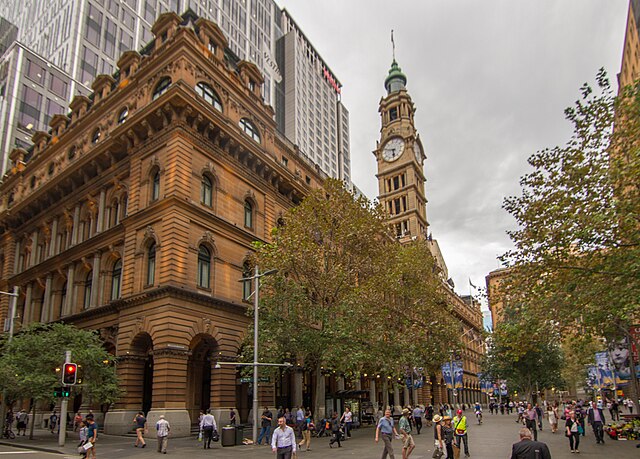Harry Seidler was an Austrian-born Australian architect who is considered to be one of the leading exponents of Modernism's methodology in Australia and the first architect to fully express the principles of the Bauhaus in Australia.
Harry Seidler
Harry Seidler (right) with Walter Gropius in Sydney 1954
Rose Seidler House, Wahroonga, Sydney, 1948–50
Australia Square, Sydney, 1961–67
Architecture of Australia
Architecture of Australia has generally been consistent with architectural trends in the wider Western world, with some special adaptations to compensate for distinctive Australian climatic and cultural factors. Indigenous Australians produced a wide range of structures and places prior to colonisation. Contemporary Indigenous practitioners are active in a broad range of built environment fields. During Australia's early Western history, it was a collection of British colonies in which architectural styles were strongly influenced by British designs. However, the unique climate of Australia necessitated adaptations, and 20th-century trends reflected the increasing influence of American urban designs and a diversification of the cultural tastes and requirements of an increasingly multicultural Australian society.
A 19th-century engraving of an indigenous Australian encampment, representing the Indigenous mode of life in the cooler parts of Australia before the arrival of Europeans
Australian cities suffered from lax or nonexistent heritage preservation and protection, resulting in widespread loss of prominent early architectural styles–for example, Melbourne's Queen Anne style APA Building, built in 1889, was one of the world's tallest buildings in the 1890s but was demolished in the contemporary-conscious early 1980s.
Internationally, the Sydney Opera House is the most recognised symbol of Sydney
Sydney General Post Office, with an ornate mansard roof and clock tower (1891)








